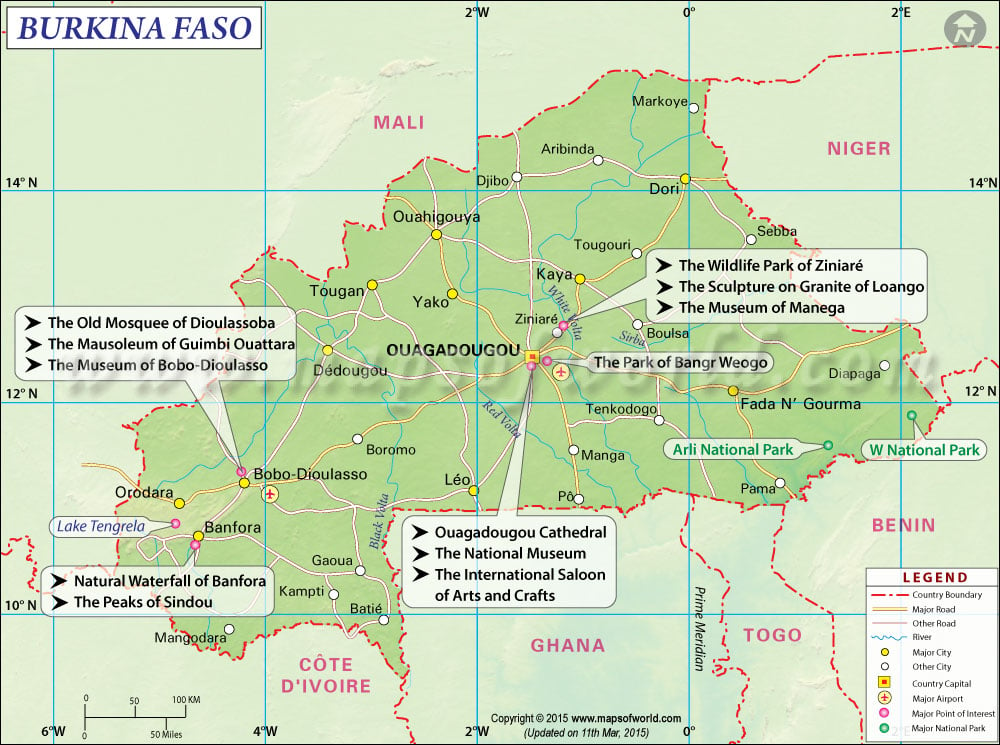Burkina Faso Map

- Neighboring Countries - Mali, Niger, Benin, Togo, Ghana, Cote Divoire
- Continent And Regions - Africa Map
- Other Burkina Faso Maps - Where is Burkina Faso, Burkina Faso Blank Map, Burkina Faso Road Map, Burkina Faso Rail Map, Burkina Faso Cities Map, Burkina Faso Political Map, Burkina Faso Physical Map, Burkina Faso Flag